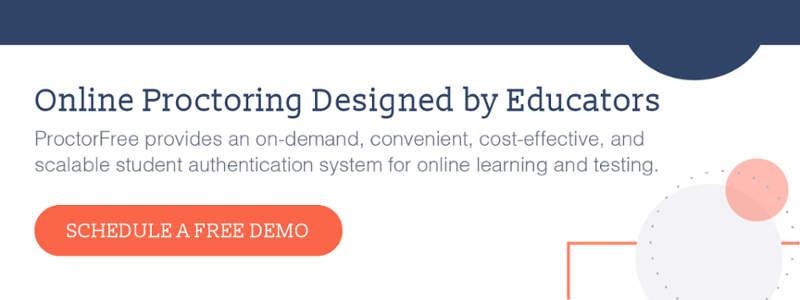
2020 will surely go down in history as a year when humanity was put to the test.
The novel coronavirus pandemic has introduced a worldwide wave of mass disruption and digital transformation, the likes of which we have never seen before. As academic and business leaders rush to conform to brand-new norms, online exams have proven to be a powerful resource, and that trend is here to stay.
How we got here
The amount of change in the first half of 2020 is arguably as remarkable as the swiftness of it.
In January, COVID-19 had just begun to make headlines. By March, much of the world was at its beck and call, with states, governments and schools shutting down. The University of Washington became the first large American university to shutter in-person classes in favor of online programming. And so the rush for distance learning began.
That spring proved educational, to say the least, as instructors familiarized themselves with video-conferencing tools and debated the merits of synchronous and asynchronous courses to accompany students across time zones and overseas. Before long, a running joke emerged among students that they were attending “Zoom University.” All the while, faculty and administrators scrambled to brainstorm a game plan for the fall with a full range of scenarios.
Testing: What now?
Amid the efforts to keep everyone safe, a different question lingered in the background: How can institutions ensure the integrity of coursework and effectively monitor students’ progress in a virtual reality? After all, it isn’t enough to simply have classes. Classes need to hold value and produce a measurable impact. Many institutions opted to temporarily forgo traditional grading systems in lieu of pass-fail assessments, but the search for a more sustainable solution persisted.
Professional certification and licensing exams were affected as well, with bar exams a prominent example. Several states opted to postpone the exams and develop online versions. The American Bar Association adopted a policy resolution encouraging states to consider allowing recent law school grads to practice on a limited basis.
Enter online proctoring
Traditional in-person exam proctoring presents substantial risks for test givers and takers in the pandemic era. Online proctoring, on the other hands, allows for much more flexibility (and social distancing) without sacrificing accountability or visibility.
Third-party tools such as ProctorFree integrate with learning management systems and help test takers complete their exams on their personal computers. As a service, online proctoring has been around for some time, but recent advances in online infrastructure and bandwidth have allowed for rapid growth during the pandemic. More than half of academic institutions already use online or remote proctoring, according to an April 2020 poll released by non-profit Educause. Another 23 percent of institutions reported that they were considering adopting the technology.
While created to fill the same basic need, not all online proctoring tools are created equal. As with any software or system, the platforms vary wide in the features they offer, the approach they take and the experience they generate for the test taker and the educator. And as fall approaches, educational institutions at all levels need to take a hard look at their service of choice and ask a few key questions: Does it accomplish your goal of preserving the integrity of the testing process? Does it protect the privacy and security of your students? And does it deliver the information you need in a format that suits the needs of your institution?
What does the future hold?
Academic institutions and businesses are opting for flexibility in the second half of 2020. Though some universities such as Harvard are planning to keep instruction online for the full academic year while allowing some students on campus as circumstances allow, others are willing to roll the dice on in-person instruction.
In the meantime, online proctoring, with its versatility and convenience, will, in all likelihood, remain part of the plan. After all, safety is a smart move for everyone.
Interested in learning more? Email info@proctorfree.com to request a copy of our eBook, The Definitive Guide to Proctoring During a Pandemic.
Sources:
https://www.nytimes.com/2020/03/06/us/coronavirus-college-campus-closings.html
https://er.educause.edu/blogs/2020/4/educause-covid-19-quickpoll-results-grading-and-proctoring
https://www.cnn.com/2020/07/23/success/harvard-online-cost-student-decision/index.html


